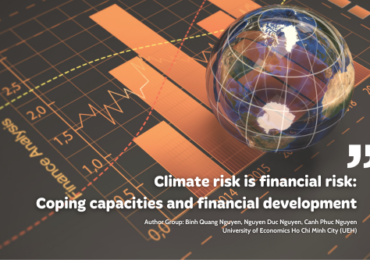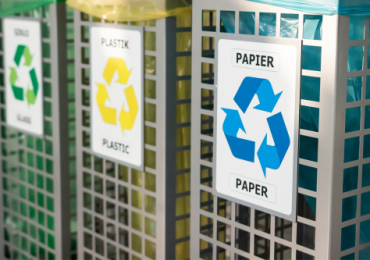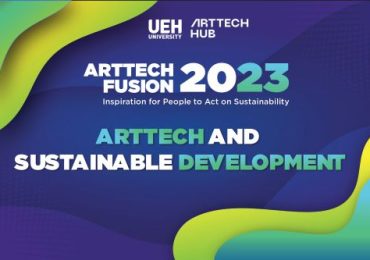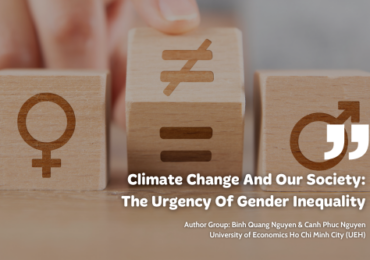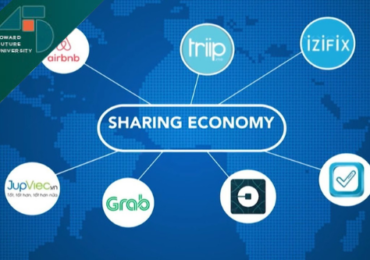[Research Contribution] Untangling the “Spaghetti Bowl” of Sustainability Reporting Standards
20 July, 2025
Keywords: Sustainability reporting, sustainability reporting standards, circular economy
In today’s global context, businesses are under increasing pressure to operate with greater transparency and accountability in terms of environmental and social performance. In response, a variety of sustainability reporting standards have emerged to serve as guiding frameworks. However, the overlapping, diverse, and ever-evolving nature of these standards has led many companies to liken them to a “spaghetti bowl” – complex, tangled, and difficult to navigate. This article, developed by the Institute of Sustainable Finance at the University of Economics Ho Chi Minh City (UEH), provides a comparative analysis of the most widely adopted sustainability reporting standards. It also offers strategic recommendations to help Vietnamese enterprises untangle this web of reporting frameworks, paving the way toward harmonization and integration of sustainability reports in accordance with international best practices.
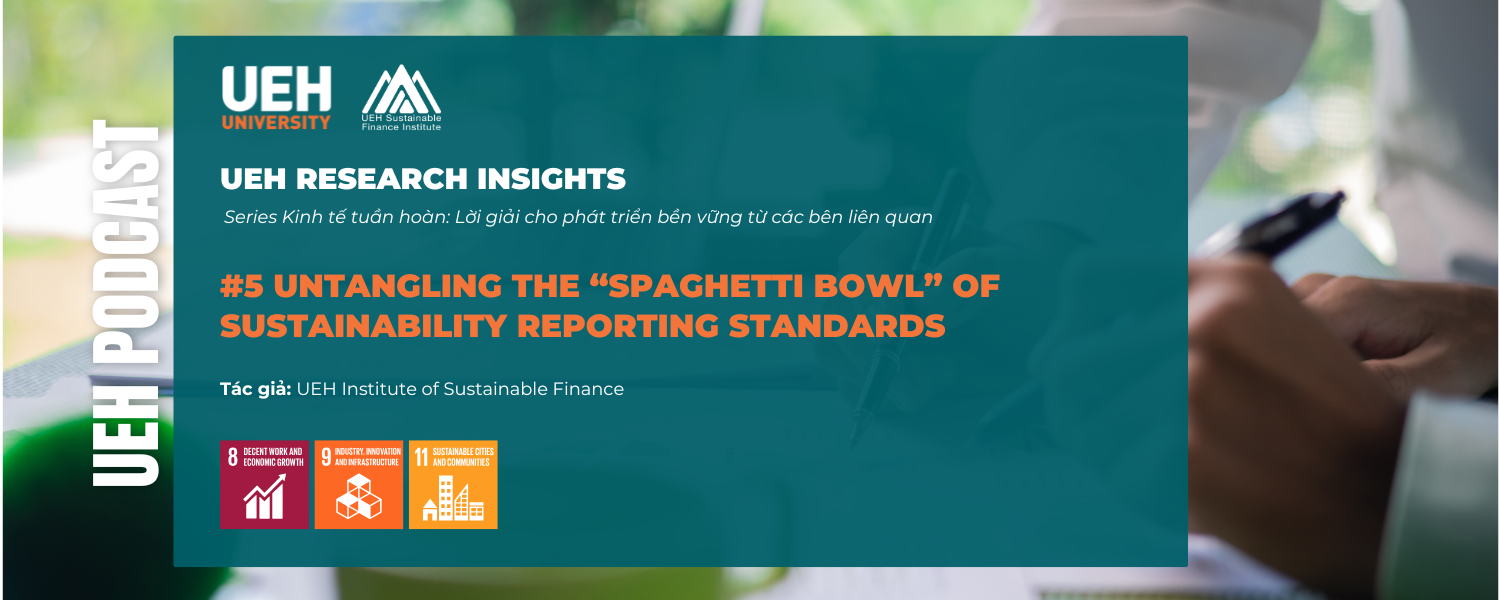
The Role of Sustainability Reporting
Sustainability reporting is no longer merely a matter of regulatory compliance or a symbolic gesture of corporate social responsibility. Rather, it has become an integral part of an enterprise’s identity and strategic narrative. Beyond its moral or community-oriented motivations, businesses are increasingly recognizing the tangible and intangible benefits associated with sustainability reporting.
One of the foremost advantages is its contribution to enhancing corporate reputation. In today’s hyper-connected world – where information spreads at unprecedented speed – consumers, investors, and other stakeholders closely scrutinize companies’ environmental, social, and governance (ESG) performance when making decisions about purchases, investments, and partnerships. A well-prepared and sincere sustainability report serves as a powerful communication tool, enabling firms to demonstrate their commitment to responsible business practices and directly influencing public perception.
Secondly, in an investment landscape where ESG considerations are becoming deeply embedded in decision-making processes, sustainability reporting acts as a magnet for capital. Companies that embed sustainability and ethical considerations into their business strategies—and transparently report these commitments – are more likely to attract diverse pools of investors, particularly impact investors, and gain access to lower-cost capital.
Moreover, in a global context increasingly shaped by requirements for social safeguards and emission reductions, sustainability reports that outline strategies for minimizing negative environmental and social impacts can serve as key credentials for entry into sustainable global supply chains. Demonstrating alignment with international sustainability expectations is increasingly viewed as a prerequisite for long-term competitiveness and market access.
In essence, sustainability reporting is not merely a legal formality – it is a strategic instrument that can open doors to new partnerships, enhance market competitiveness, and strengthen a firm’s financial position.
The “Spaghetti Bowl” of Sustainability Reporting Standards
Despite its strategic value, the landscape of sustainability reporting has often been likened to a “spaghetti bowl” – tangled and difficult to navigate. Globally, there are more than 600 different frameworks and standards for sustainability reporting, ranging from GRI, SASB, TCFD, and CDP, to the more recent IFRS Sustainability Disclosure Standards and the EU’s Corporate Sustainability Reporting Directive (CSRD). The complexity arises not only from the diversity in scope and approach across these standards, but also from the escalating demands of stakeholders – including investors, consumers, regulators, and civil society – for transparent, comprehensive disclosures on environmental, social, and governance (ESG) impacts.
Statistics reflect the growing pressure for ESG transparency. In 2022, 96% of the 500 largest U.S. companies by market capitalization published sustainability reports, up from 86% in 2018 – highlighting a rapid increase in ESG disclosure expectations.
In Vietnam, the Ministry of Finance has mandated ESG disclosure through Circular 155/2015/TT-BTC, which has since been updated via Circulars 96/2022/TT-BTC and 116/2022/TT-BTC. These regulations require all publicly listed and traded companies to report ESG information in their annual reports. By 2024, the number of Vietnamese companies issuing sustainability reports in line with international standards rose by 40% compared to 2023, adopting frameworks such as GRI, IFRS Integrated Reporting, SASB, and ISSB (which integrates TCFD guidelines).

Source: Thilan Anuradha[3]
As the evidence shows, Vietnamese enterprises are increasingly adopting multiple sustainability reporting standards in parallel. To help unravel the so-called “spaghetti bowl of sustainability reporting standards,” we now proceed with a step-by-step comparative analysis of the most widely used frameworks – focusing on their scope, materiality, and compatibility with financial reporting.
Untangling the “Spaghetti Bowl” of Sustainability Reporting Standards
Comparative Overview of Major Standards
In this section, we conduct a structured comparison of five leading sustainability reporting standards: GRI, SASB, TCFD, CDP, and the IFRS Sustainability Disclosure Standards.
The comparison is organized around the following key criteria: scope of disclosure; definition of materiality; indicators and metrics; reporting format and structure; assurance requirements; global applicability; current adoption rate; integration with financial statements
Table 1: Comparative Analysis of Key Sustainability Reporting Standards
| Standard | Scope | Materiality | Indicators & Metrics | Reporting Format | Assurance | Global Applicability | Best Suited For | Integration with Financial Reporting |
|---|---|---|---|---|---|---|---|---|
| GRI (Global Reporting Initiative) | Comprehensive (environmental, social, governance) | Double materiality (impacts on and from sustainability) | Topic-specific indicators | Structured framework with sections on organizational profile, strategy, and governance | Third-party assurance encouraged | Designed for global application; widely used | All types of organizations | Can be standalone or integrated; not directly linked to financial statements |
| SASB (Sustainability Accounting Standards Board) | Industry-specific financially material ESG issues | Single materiality (impact on financial performance) | Industry-specific metrics | Flexible; can be part of existing reports or standalone | Not required; optional | Initially U.S.-focused, now global via IFRS | Large enterprises, especially in the U.S. | Financially oriented; aligned with decision-useful financial information |
| CDP (Carbon Disclosure Project) | Primarily climate; also covers water and forests | Materiality based on key climate risks and opportunities | Emissions data, targets, and performance metrics | Online disclosure platform | Assurance not required | Used globally | Medium and large enterprises | Climate-related disclosures relevant to financial risk assessment |
| ISSB (IFRS S1 & S2) | Financially material sustainability issues; separate climate standard | Single materiality (impact on financial position) | Governance, strategy, risk management, and metrics | Can be included in financial reports or separate reports depending on jurisdiction | Not specified, but may be required in some jurisdictions | Aimed at global standardization | Medium and large enterprises | Directly integrated with financial statements |
| TCFD (Task Force on Climate-related Financial Disclosures) | Climate-related risks and opportunities | Single materiality (impact on financial position) | Guidance on key climate indicators | Flexible; can be part of existing reports | Not required, but encouraged | Widely adopted globally | Firms disclosing climate-related financial risks | Can be integrated |
Guidance for Selecting the Appropriate Reporting Standard
The choice of sustainability reporting standards depends on each enterprise’s specific needs and stakeholder expectations:
- For companies seeking to produce comprehensive reports that serve multiple stakeholder groups, the GRI standards are highly suitable. For instance, global corporations such as Nike and General Motors, as well as leading Vietnamese firms like Vinamilk and Vietcombank, adopt GRI to comprehensively communicate their environmental, social, and governance (ESG) performance.
- For investor-focused enterprises, particularly in industry-specific contexts such as the technology sector in the United States, SASB or IFRS Sustainability Disclosure Standards (ISSB) offer better alignment. These frameworks emphasize financially material ESG issues that directly affect company performance and investor decision-making.
- For firms with significant climate-related exposure, especially in sectors such as oil and gas, CDP provides detailed guidance for environmental data disclosure, helping companies clearly articulate their climate impact.
- For commercial banks and insurance companies, TCFD is the most appropriate, as it focuses on the governance and management of climate-related financial risks and opportunities.
- In the European Union, from 2025 onwards, publicly listed companies with more than 500 employees are mandated to report under the Corporate Sustainability Reporting Directive (CSRD) using the European Sustainability Reporting Standards (ESRS). By 2026, this requirement will extend to all large companies meeting at least two of the following three criteria: (1) turnover exceeding EUR 50 million, (2) total assets over EUR 25 million, or
(3) an average workforce exceeding 250 employees. However, in addition to CSRD/ESRS, companies may still adopt other international standards depending on strategic needs and stakeholder expectations.
Table 2. Key Differences between GRI and CSRD/ESRS
| Criteria | GRI | CSRD/ESRS |
|---|---|---|
| Legal Status | Voluntary | Mandatory for EU companies and their supply chains |
| Disclosure Orientation | Outward impact (impact materiality) | Double materiality (impact and financial materiality) |
| Disclosure Scope | Flexible, based on materiality | Comprehensive and standardized structure under ESRS, using double materiality |
| Reporting Format | No required format | Digital, machine-readable format required |
| ESG Integration in Financial Reporting | Optional | Mandatory integration into management and financial reporting |
| Assurance | Not required | Limited assurance required from 2026, progressing to reasonable assurance by 2028 |
Source: EU (2023); Bataleblu et al. (2024); Materiality Master (2025)
Trends and Developments
As sustainability reporting standards continue to evolve rapidly, major standard-setting bodies such as GRI, SASB, CDP, and IFRS have begun working together to reduce redundancies and align their frameworks. Notably, the introduction of IFRS Sustainability Disclosure Standards S1 and S2 in 2023 marks a significant step toward establishing a global baseline. These developments signal a clear trend toward harmonization and integration, making it easier for enterprises to meet increasingly complex stakeholder expectations through coherent and comparable disclosures.
Conclusion
Selecting the appropriate sustainability reporting standard depends on the enterprise’s strategic goals, target audiences, and the regulatory requirements of both the domestic and partner-country jurisdictions. GRI is ideal for producing comprehensive ESG disclosures for diverse stakeholders. SASB and IFRS are well-suited for investor-focused reporting, particularly on financially material ESG issues. CDP is optimal for climate-related disclosures, especially in sectors with high environmental impact. TCFD is particularly applicable to financial institutions such as commercial banks and insurers managing climate-related financial risks.
The current convergence of global standards offers companies an opportunity to integrate and streamline multiple frameworks more effectively. Regardless of the standard adopted, organizations must stay current with regulatory and stakeholder expectations to ensure that their sustainability reports remain relevant, compliant, and value-driven.
This article was developed by the UEH Institute of Sustainable Finance (UEH SFI) – Vietnam’s first academic institute dedicated to training, research, and consulting in sustainable governance and sustainable finance. Over the years, UEH SFI has made notable contributions across three core areas: education, research, and consulting.
The institute’s Master’s program in Sustainable Business and Environmental Governance has garnered growing interest and high praise from both prospective learners and employers. In addition, UEH SFI actively participates in international forums, forges strategic partnerships with globally recognized universities, and provides consulting and technology transfer services to international organizations such as: International Finance Corporation (IFC) / World Bank; Frankfurt School of Finance & Management; University Network for Strengthening Macro-financial Resilience to Climate and Environmental Change; Global Green Growth Institute (GGGI)
UEH SFI is also proud to be one of the five founding members of the EuroCham Sustainable Finance Committee. With a clear mission to advance sustainability knowledge and leadership in Vietnam, the Institute offers: (i) Specialized short courses on sustainable finance, impact investing, climate-related financial risk management, sustainable business strategy, and sustainability reporting; (ii) Tailored consulting services for enterprises, government bodies, and local authorities on sustainable governance and finance.
This article is part of the UEH Research and Knowledge Dissemination Series, promoting the message: “Research Contribution For All – Nghiên cứu vì cộng đồng.”
UEH cordially invites our readers to follow upcoming editions of UEH Research Insights.
References:
- https://www.linkedin.com/pulse/navigating-complexities-esg-compliance-reporting-thilan-ah9rc/
- https://www.ey.com/en_gl/insights/public-policy/what-to-watch-as-global-esg-reporting-standards-take-shape
- https://thesaigontimes.vn/dua-phat-hanh-bao-cao-ben-vung-nhung-doanh-nghiep-can-thuc-chat-hon/
News and photos: Institute of Sustainable Finance, and UEH Department of Communications and Partnerships

[Podcast] Recommendations for University education development
14 February, 2025
[Podcast] Developing Vung Tau into a World-Class Tourism City
16 January, 2025
[Podcast] Postdigital Design Strategies for Media Art
6 January, 2025
[Podcast] NFTs – Artistic Innovation or Just a New Hype?
27 December, 2024
[Podcast] Boosting Employee Creativity with Constructive Feedback
23 November, 2024
[Podcast] “Dutch Disease” in Remittances and the Case of Vietnam
4 November, 2024
[Podcast] Latest approaches for sustainable universities
11 July, 2024
Data Law – Part 1: Necessity for a New Approach
18 May, 2024
Advertising Evaluation on Tiktok Platform
14 May, 2024
[Podcast] Advertising Evaluation on Tiktok Platform
13 May, 2024
Promoting Learner Autonomy in English Language Learning (Part 1)
24 November, 2023
ArtTech And Sustainable Development
27 October, 2023
Motivation of EFL Vietnamese Students in Economics-related Majors
12 October, 2023
Climate Change And Our Society: The Urgency Of Gender Inequality
12 October, 2023
People Analytics in Vietnam
10 March, 2022
Revolution in Experimental Economics
30 January, 2022
The Sharing Economy: Governance Issues in Vietnam
24 January, 2022
Employment Policy For Ho Chi Minh City in Post-social distancing Period
28 December, 2021
Lifelong learning at UEH: Towards a Sustainable University
28 December, 2021
Building a Decentralized Stock Market based on Blockchain Technology
24 December, 2021
Consumer price index from big data mining perspective (Big data)
17 November, 2021
Overview Of Digital Currency – Part 5: DIEM Private Stabilized Currency
11 November, 2021

































































































































































